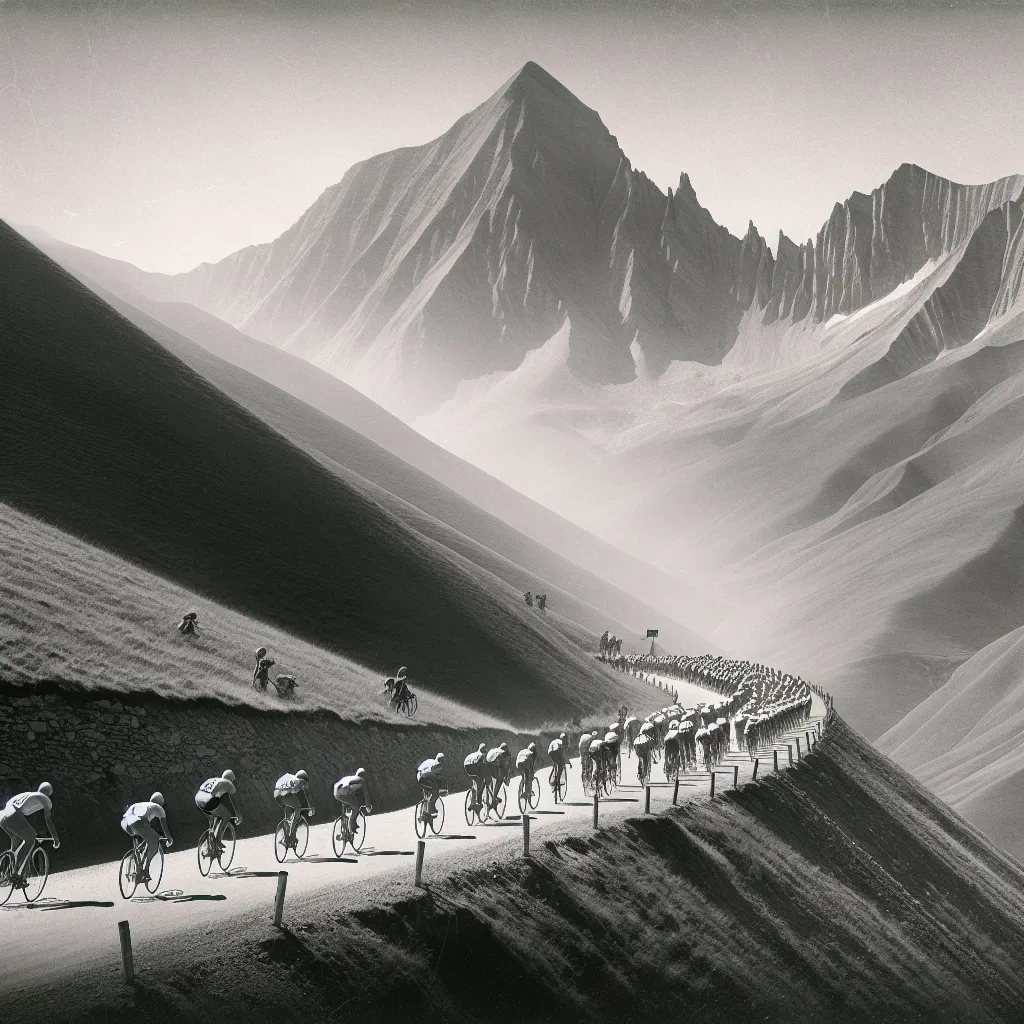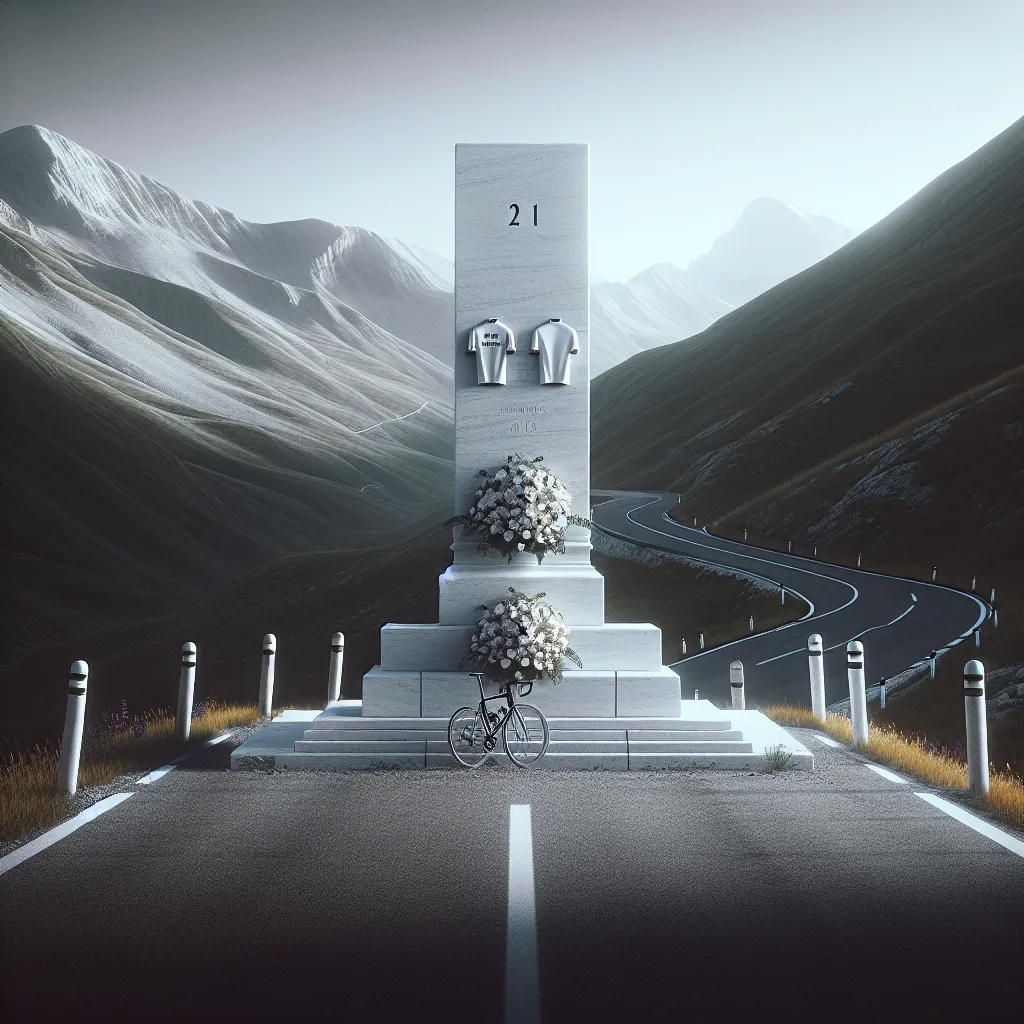Tour de France in the Couserans: Decades of Drama, Triumph, and Memory
The cols around St Girons have witnessed some of the Tour de France's most memorable moments—from tragic loss to glorious victories. Explore the rich cycling history woven into these Pyrenean mountains.

Introduction: Where History Meets the Road
The Tour de France has been traversing the Pyrenees since 1910, and the cols around St Girons in the Couserans have hosted the race countless times. These aren't just roads; they're repositories of cycling history, places where legends were made and heroes emerged. But the mountains have also witnessed tragedy, reminding us that cycling's beauty comes with inherent risks. To ride these cols today is to pedal through more than a century of stories, each switchback echoing with the efforts of those who came before.

Cycling Heritage
The Tragedy That Changed Everything: Fabio Casartelli, 1995
July 18, 1995. Stage 15 of the Tour de France crossed the Col de Portet d'Aspet, a climb the race had featured many times before. The ascent passed without incident. But on the descent, on a fast, straight section, Italian rider Fabio Casartelli crashed. The 1992 Olympic road race champion suffered fatal head injuries. He was just 24 years old.
The news stunned the cycling world. Casartelli was young, talented, and widely liked—his death felt impossibly unfair. The following day, his Motorola team rode the entire stage in tribute, with Casartelli's closest friend, Lance Armstrong, leading them across the finish line. The emotional weight was overwhelming.
At the site of the crash, near the summit of Col de Portet d'Aspet, a white memorial now stands. Flowers are always there—fresh ones left by passing cyclists who pause to pay respects. The monument has become one of cycling's most poignant pilgrimage sites, a place where the sport confronts its own vulnerability. Most riders stop, whether they knew Casartelli's story beforehand or learn it from the memorial itself. It's impossible not to be moved.

Casartelli Memorial
The Cols as Crucibles: Racing History
Beyond tragedy, the Couserans cols have shaped countless Tour de France stages. Col de la Core, at 1,395 meters, has been featured regularly since the early days of the race. Its length and sustained gradient make it an ideal selection tool—not steep enough to split the race instantly, but demanding enough that riders without proper form will suffer.
The 2015 Tour included both La Core and Portet d'Aspet in Stage 12, a mountainous journey from Lannemezan to Plateau de Beille. The stage also featured the Port de Lers, creating a relentless sequence of climbing that tested the overall contenders. Chris Froome went on to win that Tour, but stages like this one—grinding, attritional days in the Pyrenees—were where he built his advantage.
Col de Portet d'Aspet's brutal gradients have made it a launching pad for attacks. Its proximity to the Casartelli memorial adds emotional weight; riders approaching it carry the memory of their fallen colleague, yet the race demands they push to their limits on the very road that witnessed tragedy. It's cycling's contradiction in microcosm—beauty and danger, celebration and sorrow, all intertwined.
Local Heroes and Bastille Day Dreams
French cycling fans hold Bastille Day sacred. A French victory on July 14 during the Tour de France is the dream scenario, combining national pride with sporting glory. The Ariege region has delivered several such moments.
In 2017, when the Tour started a stage in St Girons on Bastille Day itself, the pressure on French riders was immense. Warren Barguil delivered, winning the stage to Foix after conquering Col d'Agnes and the Mur de Péguère. The celebration throughout the Ariege was intense—bars in St Girons erupted, cyclists who'd watched from the roadside poured back into town honking horns and waving flags. It was cycling as festival, sport as communal celebration.
These moments matter because they're rare. The Tour de France is an international race, and French victories have become less frequent in recent decades. When they happen, especially on Bastille Day, especially in regions like the Ariege where cycling is woven into local identity, the emotion is genuine and profound.

Bastille Day Celebration
Riding Through History
What's remarkable about the Tour de France is its accessibility. The roads that hosted epic battles between Hinault and LeMond, the descent where Casartelli fell, the climbs where modern champions are forged—all remain open. Anyone can ride them.
Tackling these cols yourself creates a tangible connection to cycling's history. You can't replicate the speed or the crowd noise, but you'll experience the gradients, see the same views, and understand viscerally why certain sections of road became decisive. The Mur de Péguère's steep ramps that attacked Barguil's rivals feel just as brutal when you're riding at your own pace. The switchbacks of Col de la Core that have appeared in countless Tour broadcasts look just as beautiful from your saddle.
Many cyclists make these rides pilgrimages. They stop at the Casartelli memorial, not just from respect but from a recognition of shared vulnerability—we're all taking risks when we ride, especially in the mountains. They push hard on the climbs featured in famous stages, testing themselves against Tour de France history. And they finish with stories to tell, experiences that connect them to the grand narrative of professional cycling.
Planning Your Historical Tour
To properly explore the Tour de France history of the Couserans, you need several days and a good base. St Girons is the obvious hub—it's central, has all necessary services, and carries its own Tour history as a stage start.
Loge de Chateau Pouech, situated in the heart of the Couserans near St Girons, provides exactly what visiting cyclists need: comfortable accommodation, secure bike storage, and easy access to all the significant cols. Over multiple days, you can tackle each climb properly, visiting the Casartelli memorial, riding the 2017 Bastille Day stage route, and exploring the quieter roads that make the region special.
Suggested Itinerary:
- Day 1: Col de Portet d'Aspet, with time to visit Casartelli's memorial
- Day 2: Rest day or easy valley riding, explore St Girons
- Day 3: Col de la Core, both sides if you're feeling ambitious
- Day 4: The 2017 stage route (St Girons to Foix via Col d'Agnes and Mur de Péguère)
- Day 5: Recovery and departure, or explore more local cols
This approach lets you absorb the history rather than just ticking off climbs. You'll have time to chat with local cyclists who've watched the Tour pass through for decades, visit the small museums and cafés where Tour history is preserved in photographs and stories, and truly understand why this region matters to cycling.
Conclusion: The Road Remembers
The Tour de France will keep returning to the Couserans. The cols are too good, the scenery too spectacular, the history too rich to ignore. Each time the race passes through, it adds another layer to the story—new heroes emerge, new battles are fought, new memories are created.
For those of us who ride these roads outside of race day, that accumulated history makes every pedal stroke more meaningful. We're not just exercising; we're participating in cycling's grand narrative, connecting ourselves to a tradition that stretches back over a century. With St Girons as your base and Loge de Chateau Pouech as your comfortable refuge, you can properly explore this remarkable corner of the Pyrenees where the Tour de France has written so many unforgettable chapters. The cols are waiting. The stories are real. And you're invited to add your own.



